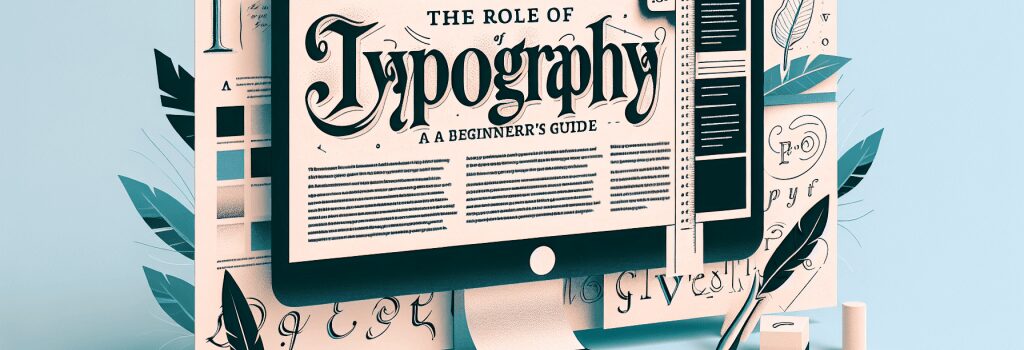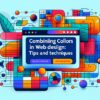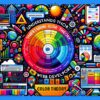The Role of Typography in Web Design: A Beginner’s Guide

Understanding the Importance of Typography in Web Design
A Beginner’s Insight
Typography is a pivotal element in web design that can immensely influence a website’s overall look, feel, and readability. For those embarking on a journey to become web developers, grasping the basics of typography is non-negotiable. It’s not just about choosing fonts; it’s about creating a coherent language that enhances user experience and communicates the website’s goals effectively.
The Essence of Typography in Web Development
Typography involves the art and technique of arranging type to make written language legible, readable, and appealing when displayed. In the context of web design, it encompasses everything from font choice and size, to line length, spacing, and color. Each decision in typography design plays a crucial role in how users perceive and interact with a website.
Communicating the Right Tone
The fonts you choose can significantly affect the tone and personality of your website. A website for a law firm might opt for serif fonts to evoke a sense of solemnity and reliability, whereas a creative agency’s website might use sans-serif fonts to project modernity and innovation. Understanding the psychology behind typefaces can aid in communicating the right message to your audience.
Enhancing Readability and User Experience
Good typography isn’t just about aesthetics; it’s about usability. The primary goal of any website is to convey information. If your content is hard to read, users will likely leave your site in frustration. Factors such as font size, line height, and paragraph spacing are crucial in making your website accessible and enjoyable to read.
Creating a Visual Hierarchy
Hierarchy in web design helps guide users through your content in a logical order, highlighting what’s most important. Through typography, you can create a visual hierarchy that directs users’ attention to specific parts of your page. Headings (H1, H2, H3 tags) are not only essential for SEO but also for breaking up text into digestible sections, making your website more engaging and easier to navigate.
Best Practices for Typography in Web Design
As you embark on incorporating typography into your web designs, here are some best practices to adhere to:
– Consistency is Key: Stick to a limited number of font families (ideally 2-3) to maintain a cohesive look across your website.
– Contrast for Readability: Ensure there is enough contrast between your text and background colors to make reading effortless, especially in different lighting conditions.
– Responsive Typography: With the diversity of devices today, make sure your typography scales well on different screen sizes, enhancing readability across all platforms.
– Mind the White Space: Adequate spacing between lines and around text blocks can significantly improve readability and overall visual impact.
– Test Extensively: Always test your typography choices on various devices and browsers to ensure a consistent and positive user experience.
Conclusion
Typography is much more than just choosing attractive fonts. It’s a fundamental aspect of web design that affects usability, accessibility, and user engagement. By understanding and implementing the principles of good typography, aspiring web developers can significantly enhance their web designs, offering a better experience to users and potentially increasing website success. Remember, typography is an art, but also a science—requiring a balance between creativity and practical application.
Embrace the journey of exploring typography in web design. It’s a skill that will not only elevate your designs but also deepen your understanding of effective communication in the digital age.


